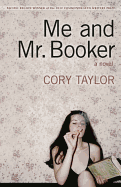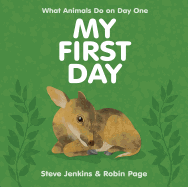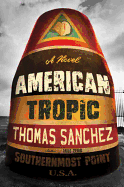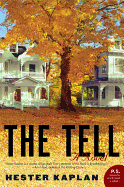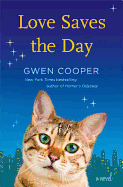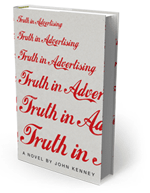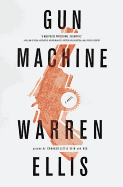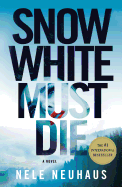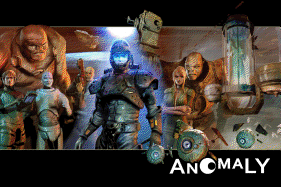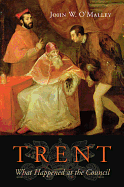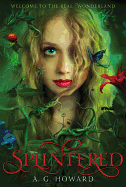Tuesday, January 22, 2013
Holiday over-indulgence may force a cutback on sugary sweets and the need for crash diets. But you don't need to deprive yourself completely. You can still indulge in some delicious dessert-inspired novels without guilt--or calories:
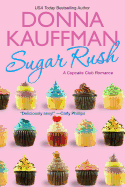 In Sugar Rush, the first installment in the Cupcake Club series by Donna Kaufman, Lani Trusdale walks away from her demanding job in an upscale New York City pastry shop and launches her own cupcake store on a remote island in Georgia. But Lani's dreams of a quiet life honing her baking chops are upended when her former boss, a high-profile TV chef, descends upon the town to woo his protégé by filming a segment of his top-rated cooking show in her cupcakery.
In Sugar Rush, the first installment in the Cupcake Club series by Donna Kaufman, Lani Trusdale walks away from her demanding job in an upscale New York City pastry shop and launches her own cupcake store on a remote island in Georgia. But Lani's dreams of a quiet life honing her baking chops are upended when her former boss, a high-profile TV chef, descends upon the town to woo his protégé by filming a segment of his top-rated cooking show in her cupcakery.
Precise measurements and the scrumptious smells of baking bring calm and order to the frenetic life of Ruth, a middle-aged Minneapolis housewife and mother who is caught in the vortex of her family's struggles in Eat Cake by Jeanne Ray. Taxed by the challenges of an unemployed husband, rebellious teenagers, a live-in mother and the unexpected arrival of a wounded, long lost father, Ruth's daily quest to bake the perfect cake elevates the art (and Zen) of comfort food to a whole new level.
A copywriting job sweetens the life of Molly Hagan, a divorced single mother living in Brooklyn in Vanity Fare: A Novel of Lattes, Literature, and Love. Megan Caldwell's self-deprecating heroine pens clever literary catchphrases like "Much Ado About Muffins" and "A Clockwork Orange Chiffon Cake" for a new bakery located near the New York Public Library. In the midst of pulling together her presentation, Molly gets caught in a romantic tug of war between a sexy British pastry chef and his business partner.
No fat, no sugar, but an abundance of sweetness. --Kathleen Gerard, blogger at Reading Between the Lines
Me and Mr. Booker
by Cory Taylor
A very young girl, yearning to escape her provincial beginnings, is swept up into an ill-advised romance with an older, more sophisticated, totally inappropriate man who educates her in sex and heartbreak. You know how this story ends, right? Happily, Australian author Cory Taylor rescues this worn-out tale with Martha, the "me" of Me and Mr. Booker. Sixteen years old and trapped in a fatally dull town, Martha recounts her doomed affair with Mr. Booker in a sardonic, clear voice.
Martha is drawn into a dangerous triangle with Mr. Booker and his wife after meeting them at one of her lonely mother's many parties. The childless couple, recently arrived from England, "adopt" Martha, buying her gifts and taking her out for boozy lunches. Martha is captivated by the glamorous Bookers and responds immediately when Mr. Booker initiates an affair.
As expected, there are seedy motel rooms and broken promises and spiraling consequences. Martha falls in love with Mr. Booker, but never learns much about him. He speaks in cynical, hackneyed phrases--"as if everything was a game because he had decided to make it one"-- and drinks constantly, both habits designed to veil his superficiality and narcissism.
Though she is smart and sharply perceptive about the many floundering adults around her--the dysfunctional Bookers, her estranged father, her disappointed mother and her ragtag broken friends--Martha's naivety about the affair is a recurring surprise, a reminder of how young she truly is. --Hannah Calkins, blogger at Unpunished Vice
Discover: Australian author Cory Taylor's debut novel is a fresh take on an old story: a young girl, an older man and a sticky, doomed love triangle.
American Tropic
by Thomas Sanchez
Thomas Sanchez's American Tropic introduces readers to Truth Dog, an "eco-shock-jock" who broadcasts off Key West from his trawler, Noah's Lark, inviting callers to rail against those who would destroy the environment. One day, a raft loaded with dead Haitians bumps into his boat. A single teenage boy has survived. Inspector Luz, a lesbian Cuban-American cop, is called in to investigate; Noah keeps the boy hidden.
Luz is also investigating the deaths of two other men, their naked bodies mutilated and marked with a big X. One was tied to a buoy at sea, the other hung in a decrepit bat house. Both were involved in a big development project that would damage Key West's fragile ecosystem; their third partner is still alive. Luz discovers the deaths could be the work of a serial killer who is drawing upon Haitian vodou and its destructive Bizango secret society.
Sanchez's droll and suspenseful tale is populated with a colorful cast of characters: Pat, a shrimper who enjoys illegally hunting the area's big turtles; Hogfish, a vet suffering from post-traumatic stress disorder, and his painter father, Laveck, who lives in a huge rundown mansion; Zoe, Noah's ex (whom he still loves); and Pat, Luz's partner, and their two girls, one of whom is suffering from cancer. Sanchez does a terrific job of interweaving their stories and more in this thoughtful and illuminating environmental call to action. --Tom Lavoie, former publisher
Discover: The author of Rabbit Boss and Mile Zero takes on environmental rage with a mystery-thriller set in Key West's dark side.
The Tell
by Hester Kaplan
Those close to us will often, over time, learn to recognize our "tells," physical signals of our state of mind--signals we may always not be conscious we're sending. Deciphering those signals is much harder than learning to spot them, though, and without clear and direct communication, they're subject to misinterpretation. Hester Kaplan's The Tell explores a husband's efforts to unravel his wife's unconscious messages.
Providence, R.I., seems an odd place to find a retired sitcom actor, but Wilton Deere has moved there in an attempt to reconnect with his long-estranged daughter, Anya. Mira Thrasher, surprised to find that the man she watches on TV during her late-night bouts of insomnia is living next door, invites him to dinner. As Wilton becomes a bigger part of their lives, enlisting Mira and her husband, Owen, into his efforts to win over Anya, Owen becomes increasingly unsettled by Mira and Wilton's developing relationship. When he finds that Mira has been disappearing from the struggling art school she runs to spend hours at a nearby casino with Wilton, Owen fears she's developing a gambling problem. If she is, it's not the couple's only problem.
The Tell is provocative, beautifully written and offers great discussion potential. In exploring the choices we make in our closest relationships, including the things we can't tell each other, Kaplan (The Edge of Marriage) draws an unsettlingly intimate portrait of a marriage in crisis. --Florinda Pendley Vasquez, blogger at The 3 R's Blog: Reading, 'Riting, and Randomness
Discover: Secrets and shifting affections reshape a couple's relationship over the course of a year.
Fear of Beauty
by Susan Froetschel
Susan Froetschel's novel Fear of Beauty offers a compelling portrait of Sofi, an Afghan woman mourning the mysterious death of her oldest son while caring for a controlling husband and four other children--tilling the fields all day while cooking and cleaning without running water or electricity.
When a group of violent insurgents threaten Sofi's small village, fate causes her to befriend an American woman, who teaches Sofi to read. This causes an empowered Sofie to discover some horrifying secrets about those she holds dear. Froetschel's intricate plot is further complicated when a group of U.S. Marines set up camp near Sofie's home. As Sofi soon learns, sometimes it's hard to separate the good guys from the bad guys.
It may be difficult for some readers to stomach parts of this novel--there's murder, an acid attack, the trafficking of children, women being punished for learning to read. But Sofi finds her way in an act of courage that will leave you feeling that this fictional woman halfway across the world isn't so different from you and me. Froetschel has great respect for the Afghan culture and deftly provides a slice-of-life tale that moves, informs and even surprises. --Natalie Papailiou, author of blog MILF: Mother I'd Like to Friend
Discover: An intimate portrait of an Afghan woman interwoven with a modern-day mystery.
Love Saves the Day
by Gwen Cooper
Prudence, a smart, lovable and perceptive brown tabby cat born with extra toes who used to live on the streets of Lower Manhattan, narrates Gwen Cooper's Love Saves the Day. Prudence believes that she adopted Sarah, a middle-aged, artsy single mother and former owner of a hip, downtown music store. But when Sarah suddenly doesn't come home to their apartment, Prudence gets worried that something has happened to her roommate of "three years, one month and sixteen days." And when Laura, Sarah's lawyer daughter, and her new husband arrive at the apartment days later and pack up the cat and take her with them, Prudence must relearn how to navigate the world and find a way to appeal to her new caretakers, who seem less than fond of felines.
But the challenges Prudence faces in adapting to her new environment are only part of the problem. Laura, too, is trying to adjust to a motherless world while facing work demands, grappling with her own maternal leanings and dealing with her recently unemployed husband. In the end, Prudence's presence becomes the impetus to reconcile the complex feelings and tenuous history of a vexing mother-daughter relationship and the strain of the couple's marriage.
The interspersed viewpoints of Prudence, Laura and Sarah enrich Cooper's sensitively told novel that unravels a story (based on actual events) about a century-old tenement building--and the inhabitants therein. That story ultimately serves as the basis to understanding the emotional subtexts of these authentic, well-drawn characters. --Kathleen Gerard, blogger at Reading Between the Lines
Discover: The presence of a smart, lovable cat becomes the impetus to reconcile long-simmering familial issues.
Truth in Advertising
by John Kenney
A debut novel with a sharp bite and a sweet soul, John Kenney's Truth in Advertising has a lot to say about pop and corporate culture, work environments, friendship and family. Comparisons to Jonathan Tropper and Joshua Ferris are inevitable, and although Kenney does mine some of the same rich territory, his voice and his characters--by turns ironic, vulnerable and unguardedly optimistic--are entirely his own. An ex-copywriter and a contributor to the New Yorker, Kenney has an eye (and an ear) for both the sublime and the ridiculous and for narrative in all its forms and permutations. Effortlessly combining satire and domestic drama, the novel offers many surprising turns and never sacrifices humor in the service of emotion.
The narrator of Truth in Advertising is Finbar Dolan, an almost-40, moderately successful adman who's been put in charge of Snugglies, his company's big diaper account. Darrin Stephens he's not, though his Sword of Damocles wit is sharp enough to split a falling hair. Indeed, hair-splitting is exactly what takes place in the novel's hilarious opening sequence about the absurd lengths Fin goes through to get a commercial made: "Initially, Gwyneth was not on the consideration list.... Names like Madonna and Angelina were short-listed but ultimately the client feared they were seen as 'baby thieves' (the client's words). President Obama's mother-in-law, Marian Robinson, was added to the list but was also ultimately nixed because, as our senior client, Jan, said on a conference call to general acclaim, 'This is about the mother-child bond, not the nana-child bond. Though we would like to see more women of color.' Which is when a midlevel client responded, suggesting Victoria Beckham (née Posh Spice). Which is when we informed the client that Mrs. Spice-Beckham was not a woman of color but just a woman colored, perpetually tanned, often deeply so."
It is apparent from this progressively riotous start that Fin has no illusions about the sometimes ludicrous nature of his work, where a narrative--a winning story--must be created on a moment's notice whether or not that narrative has any relationship to the truth . But Fin is also quick to admit that a false narrative can also be a beautiful one. It is because of this potential for beauty, in fact, that Fin has concocted his own narrative--a defining story that fits who he thinks he should be: a happy, well-adjusted husband with a Norman Rockwell background. Unfortunately, this story is as thin and weightless as the campaign for Snugglies' new "biodegradable" diapers, which are even less earth-friendly than their original ones. In reality, Fin has just broken his engagement to a sweet woman for no apparent reason; he is desperately lonely, secretly in love with his coworker, Phoebe, and haunted by the memories of his tragic childhood.
It's difficult to keep a bright, shiny façade glued to this kind of grim reality and so, inevitably, Fin must confront his insecurities and demons. The catalyst comes when his estranged brother (the eldest of Fin's three siblings--none of whom speak to each other) calls to tell Fin that their father (an abusive ex-cop who deserted the family when Fin was 12) is hospitalized and near death. It's almost Christmas, and Fin's boss has just told him that he must create a Super Bowl commercial for Snugglies right now but Fin decides to go to his father and, in the process, travel through his past to try to make sense of it.
Kenney shifts seamlessly between the sharp and snappy work vignettes and slower, more melancholy domestic scenes, often combining them in beautifully constructed side plots such as Fin's burgeoning relationship with Keita, the adult son of the Japanese owner of the ad agency. Keita knows a thing or two about cruel and domineering fathers and the two form a bond that is both humorous and truly moving. Gradually, Fin's work life, past, and personal life (including all the emotions he has long hidden from himself) are unbraided and revealed and the real narrative--the truthful one--is constructed.
It is a difficult trick to combine humor and pathos as effectively as Kenney does here; even more impressive considering that this is a debut novel. Kenney's advertising background has served him well; every scene involving the diaper campaign is completely on point and often laugh-out-loud funny. But there are also many tender, revelatory moments in this novel; none of which, to Kenney's great credit, ever feel forced or manipulative. An honest and very insightful novel about a business and a life that have both been anything but, Truth in Advertising is a wonderfully entertaining and elegantly written first novel from an author who will surely find a large and appreciative audience. --Debra Ginsberg, author
Mystery & Thriller
Gun Machine
by Warren Ellis
The New York City of Warren Ellis's Gun Machine is roughly recognizable as our own, in a "20 minutes into the future" sort of way. And, like the urban landscapes of Ellis's comic book series Transmetropolitan and Fell, it's a profoundly disturbing place. Detective John Tallow learns that the hard way: after taking down the lunatic who killed his partner in a shootout in a downtown apartment building, Tallow stumbles onto a locked room full of guns--"rippling patterns of gunmetal, from floor to ceiling"--and each one proves to be connected to an unsolved murder, some of them stretching back decades. For his troubles, Tallow is told to work the case, which soon becomes even weirder than it appears.
Ellis has all the police story moves from literature and TV down cold, so much so that it's hard not to see a subtle but affectionate mockery in their perfect execution. (Not too affectionate, though: As one of the crime scene unit technicians assigned to work with Tallow puts it, "I hunt and build and solve things with science. You know what a New York City cop does? Beats protestors. Rapes women.") The plot leans a little heavily on coincidence to be realistic, but you don't read Warren Ellis for realism. You read him because he's a master at folding strange corners of the universe into one meeting point, and building a compelling story around them. Gun Machine is one of his most accessible examples yet. --Ron Hogan, founder of Beatrice.com
Discover: A bizarre crime drama about a semi-disgraced NYPD detective getting his mojo back once he's put on the trail of a serial killer with ties to the city's Native American roots.
Snow White Must Die
by Nele Neuhaus, transl. by Steven T. Murray
Tobias Sartorius has served 11 years in prison for the murders of both his girlfriend and ex-girlfriend at the start of German author Nele Neuhaus's Snow White Must Die. When he is released and returns to his hometown of Altenhain, he finds the town has turned its back on his family, reducing his parents to ruins. Graffiti covers his house, stores refuse to serve him and neighbors hurl insults as he crosses town. Then a teenage girl in the town goes missing, and Tobias is once again cast under suspicion--but everything may not be as clear as it first appears. A skeleton is discovered in a local airfield, a woman is pushed into oncoming traffic and now two police detectives, Pia Kirchhoff and Oliver von Bodenstein, believe Tobias may have been wrongly accused all those years ago. But if that is the case, who did kill the two girls? And what is Altenhain working so hard to hide from the world?
Neuhaus's near-perfect thriller is slow to start, setting up details and complexities for each character and situation. The wait is worth it, though: once Neuhaus really gets going, she hurtles readers towards a fast and unexpected conclusion, with enough twists and turns to keep us guessing to the very end. --Kerry McHugh, blogger at Entomology of a Bookworm
Discover: Nele Neuhaus's American debut is a near-perfect thriller, weaving together murders, disappearances and town secrets across several years.
Graphic Books
Anomaly
by Skip Brittenham, illus. by Brian Haberlin
Anomaly, written by Skip Brittenham and illustrated by Brian Haberlin, is a huge graphic novel that tells the story of Jon, a dishonorably discharged veteran of the Conglomerate Enforcer Corps. He's been sent on a protection mission to a distant planet; what he and the other members of the exploration team find there will give him a second chance to redeem himself, help longtime enemies ally against an immense evil and decide the fate of an entire alien world. As Jon and his friends discover, it's not the shape of a being that matters, but the intent and heroism that dwells inside us all.
This is big stuff, and Anomaly doesn't disappoint. The artwork is done in a painterly style, full of science fiction tropes like system-spanning space travel, wildly divergent alien creatures and societies and a galaxy-wide corporate evil. The destination planet of Anomaly wouldn't look out of place in an Edgar Rice Burroughs novel, and though the storyline can be fairly predictable, the visual storytelling is top notch.
Anomaly has a companion app for iOS and Android devices that can be downloaded via a QR code printed in the book. Pointing the app at specially prepared pages within the volume unlocks animated 3D models of many of the people, ships and alien animals, as well as an additional 100 pages of background material on the story's fictional universe.
Anomaly tells an epic story with lush, painted visuals, wry humor and a little bit of technological gadgetry that will please anyone who loves sci-fi adventure, comic books and delightfully large coffee-table books. --Rob LeFebvre, freelance writer and editor
Discover: Even without the 3D animation app, this is a beautifully illustrated story of space travel with a wild menagerie of alien cultures and peoples. (With 3D: Wow.)
History
Trent: What Happened at the Council
by John W. O'Malley
In Trent: What Happened at the Council, Georgetown professor John W. O'Malley provides a comprehensive yet readable history of the years from 1545 to 1563, when the Catholic Church struggled to clarify its position against the challenges of Martin Luther. O'Malley keeps Trent's often lofty theological concerns well-grounded by beginning with the practical problems of convening such a council in the first place. What city had room to house the hundreds of churchmen expected to attend? Would the city have library resources adequate to their needs? Did it have enough fodder for all the horses?
Trent, in northern Italy, met none of these needs--but its location offered political advantages, and for a church desperate to maintain both the religious and political health of Europe, politics mattered. As O'Malley makes clear, the threat of war permeated nearly every laborious decision the Council undertook, affecting who participated, who drafted the resulting decrees and which matters of faith and practice were addressed--or, in the case of papal authority, which matters were ignored.
Trent is not an easy book, presupposing a background in the history of the Protestant Reformation that not all readers possess. Those who do, however, will find that Trent offers a history of unprecedented clarity, illuminating one of the most crucial yet ill-understood periods in the history of the Catholic Church. --Dani Alexis Ryskamp, blogger at The Book Cricket
Discover: A succinct yet thorough discussion of the 16th-century Council of Trent and its effects on the life of the Catholic Church.
Nature & Environment
A North Country Life: Tales of Woodsmen, Waters and Wildlife
by Sydney Lea
In A North Country Life, Vermont's poet laureate, Sydney Lea, brings together a rich, lyric compilation of essays on the women and men who have touched his life. He pays homage to fellow writers John Engels and Annie Fitch, among many other down-to-earth characters, as he weaves together snippets of times shared in the woods and on the lakes and streams of Maine and Vermont.
Fly fishing, turkey hunting and snowshoeing through deep, unexplored powder snow are just some of the backdrops for his often humorous yet melancholy remembrances of a lifetime spent reflecting on nature. Drinking, depression and the effects of aging swirl in and out of passages that describe "mule deer and antelope grazed in the meadows, breaths visible in the cold when they raised their heads." He goes on: "More than one golden eagle circled above. The sage showed the spectral green that would tax a Corot to replicate. But that foggy-glassed bottle of gin was the focus of my mind's eye."
Lea's essays are inspirational and sad, poetic and practical--crammed with the wonder of life and the despondency that accompanies such a full life, as well as the knowledge that at some point his own life will be over, too, his legacy the words he leaves behind on the page. These elegiac narratives take readers closer to understanding the crux of life while immersing them in the splendor of people, places and times that might otherwise be forgotten. --Lee E. Cart, freelance writer and book reviewer
Discover: Engrossing memories of a lifetime spent in the woods of New England.
Children's & Young Adult
My First Day
by Robin Page and Steve Jenkins
The husband-and-wife team behind the Caldecott Honor book What Do You Do with a Tail Like This? once again makes science accessible to youngest readers.
Here they correlate a baby's first day ("you opened your eyes, cried, slept, and drank some milk") with that of many other creatures in nature. Steve Jenkins's signature collage illustrations show a kiwi on its own ("as soon as I hatched, I was ready to take care of myself"), opposite a Siberian tiger licking her kitten clean. "I was born high above the ground--and I landed in a heap. But I wasn't hurt...," says the giraffe. Endnotes explain that when a mother giraffe gives birth, "her baby tucks its head between its front legs and falls five feet"; the calf, uninjured, walks within minutes.
With these endnotes, Jenkins and Page give curious readers additional details without interrupting the flow of the informational narrative. The text sticks to the facts while also offering reassurance to youngest children, as with the image of a baby zebra and its mother, who memorizes her baby's stripes: "If I wandered off, she could find me, even among the thousands of zebras in my herd." The emperor penguin proves that fathers play a role, too: "I climbed out of my egg, stood on my father's feet, and snuggled into his feathers to warm."
The variety of habitats and locales, along with the diverse ways animals enter the world and care for their young, will keep children enthralled, and likely lead them to further exploration. --Jennifer M. Brown, children's editor, Shelf Awareness
Discover: A first book of nature for youngest readers that doubles as a soothing antidote to separation anxiety.
Splintered
by A.G. Howard
Break the curse, save her mother, rescue the guy and make it out of Wonderland alive. It's a tall order for a tiny girl, but Alyssa Gardner proves that she's up for the challenge in this reimagining of Lewis Carroll's classic Alice's Adventures in Wonderland.
A.G. Howard's debut novel is not simply a modern retelling of the Alice story, but an extension of the original tale that gives the familiar characters new histories--with a contemporary kick. Here, Alyssa (great-great-great-granddaughter to Caroll's Alice) must travel to wonderland to "fix Alice's mistakes." The story is tightly plotted, but even when you think you know just where you are headed, the author reminds you that you are still in Wonderland, where things are never as they seem.
Howard brings creepiness and danger to the fore in her version of Wonderland, which is filtered through a lens of grotesque beauty and turns Carroll's ingénue into a skater chick in Lolita garb. First romance plays a significant role, too, as Alyssa accidentally brings her boy-next-door crush with her down the rabbit hole, only to run into Morpheus, the dead-sexy, winged "netherling" of her dreams. Throughout the narrative, Alyssa must confront unimagined horrors both on Earth and in Wonderland, as well as face her own dark side and desires.
Splintered is an inventive, well-written novel that will interest fans of Daughter of Smoke & Bone, Twilight, and The Looking Glass Wars. --Julia Smith, blogger and children's bookseller emerita
Discover: A contemporary twist on Alice's Adventures in Wonderland filled with suspense and first love.
| Advertisement Meet belle bear! |


